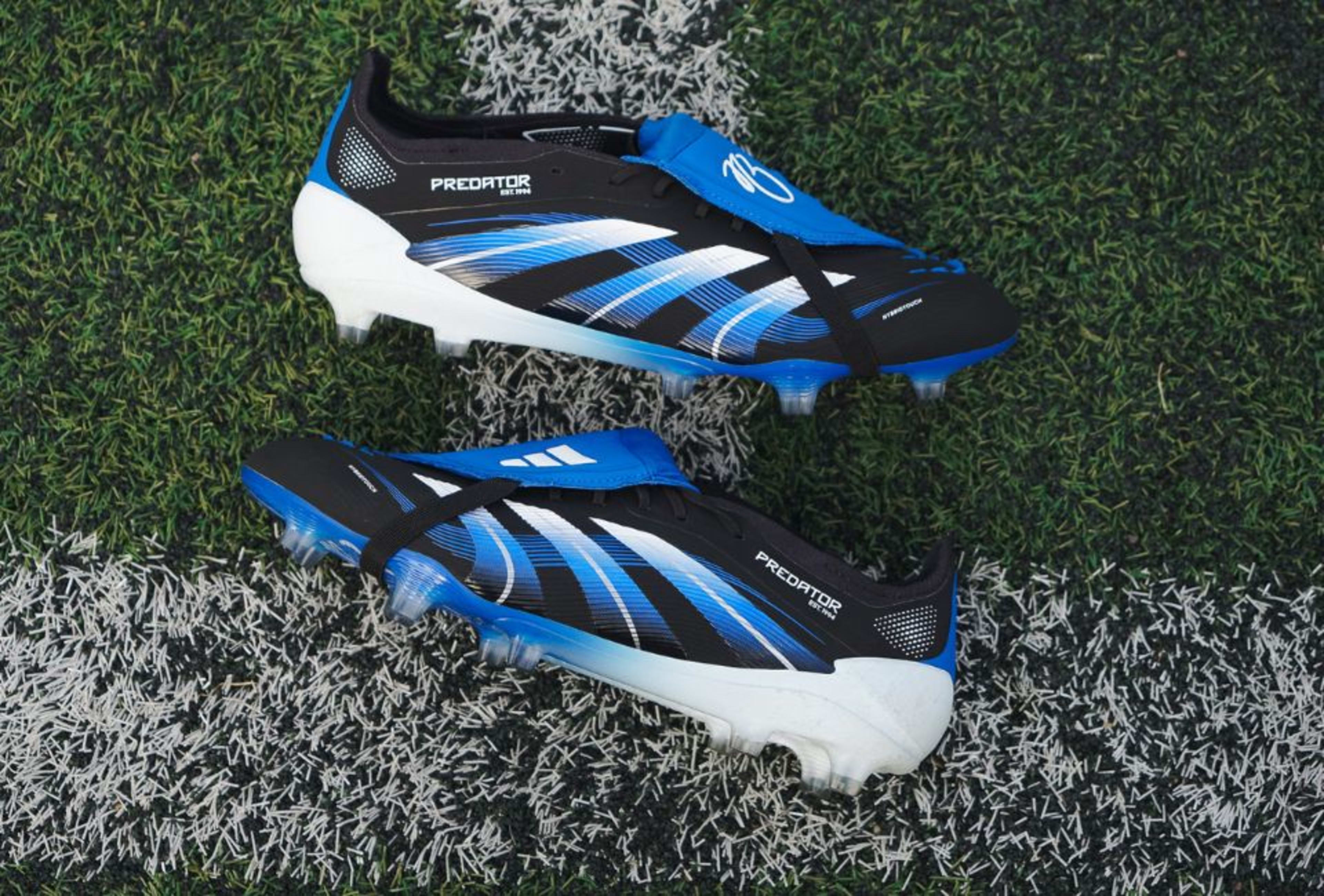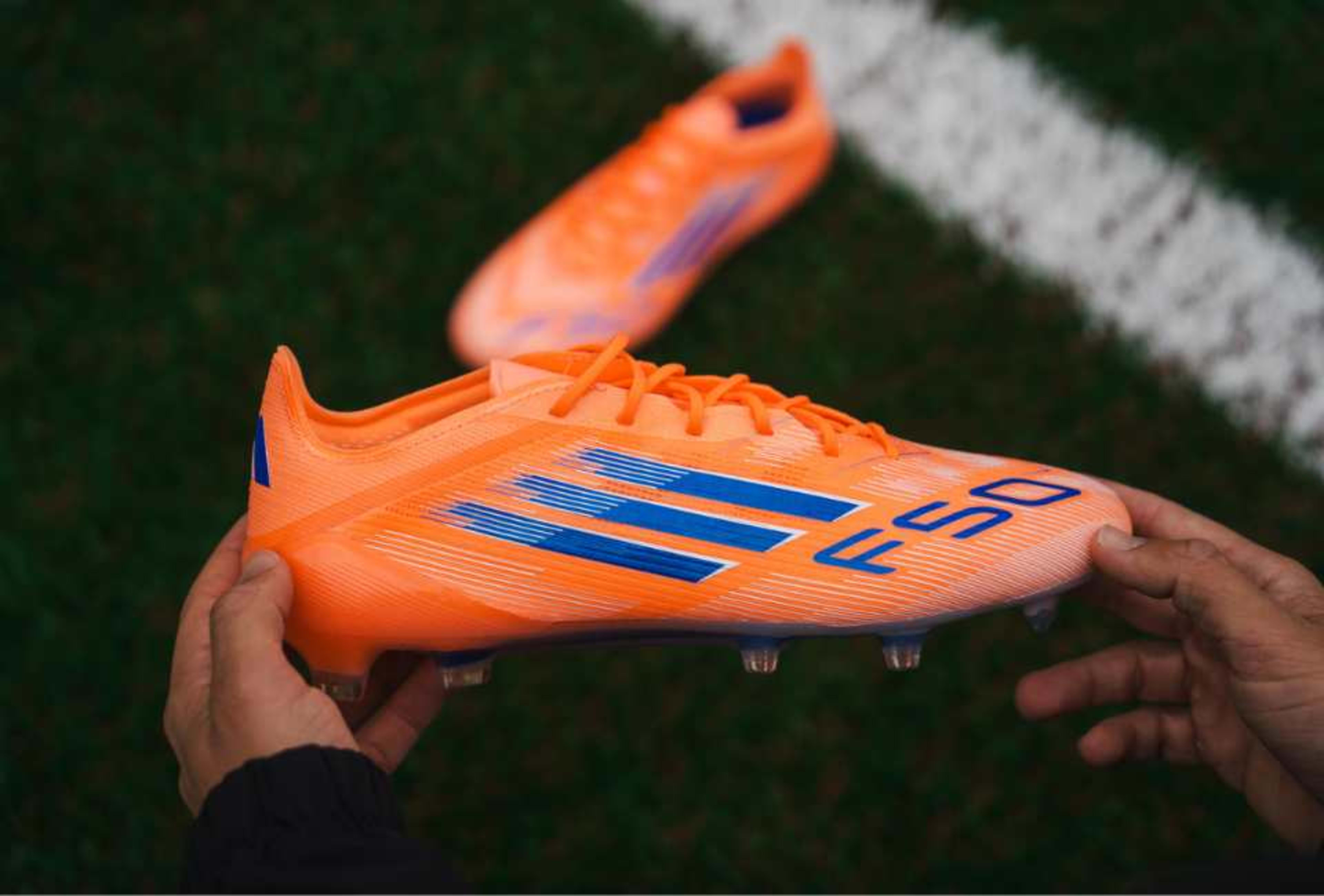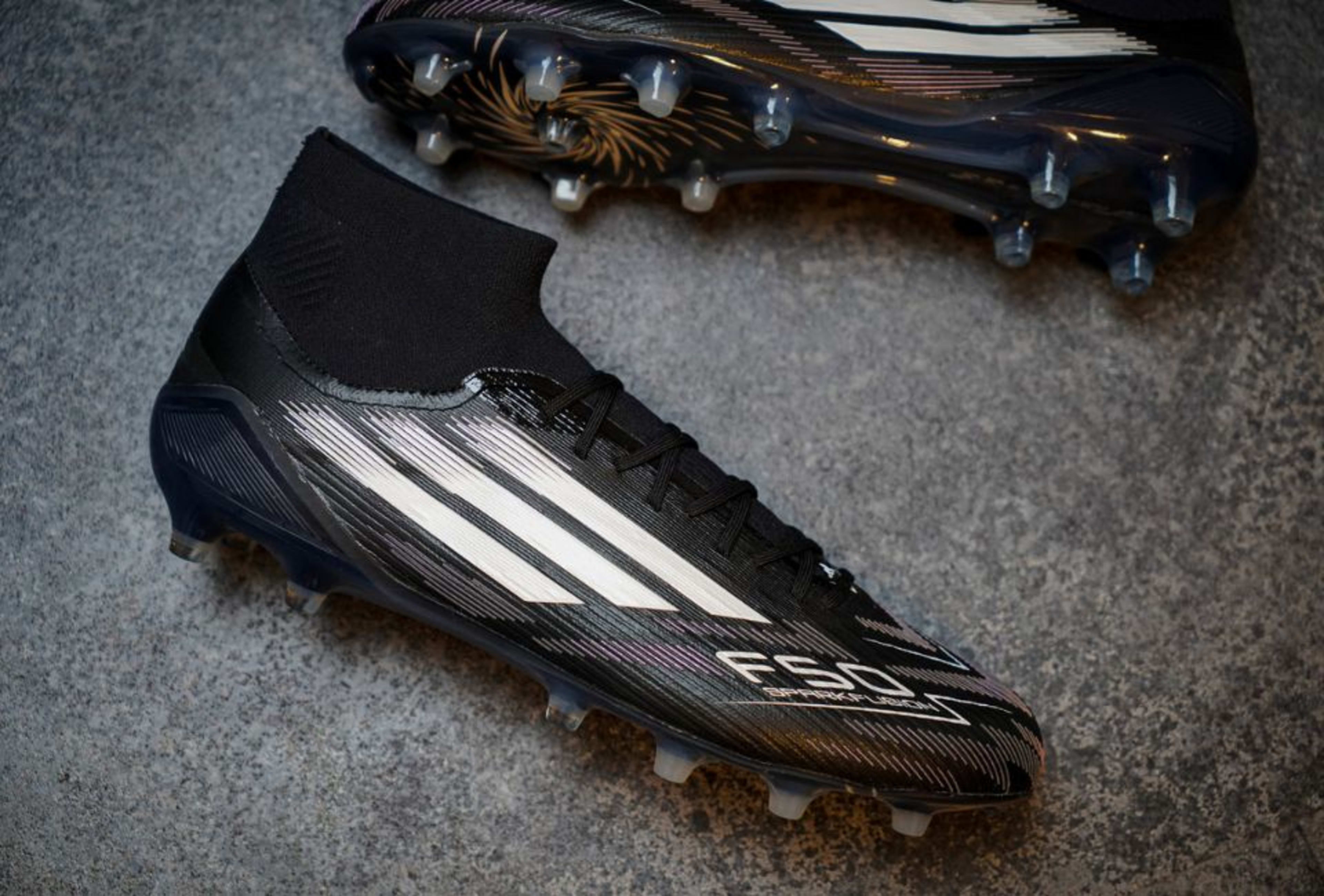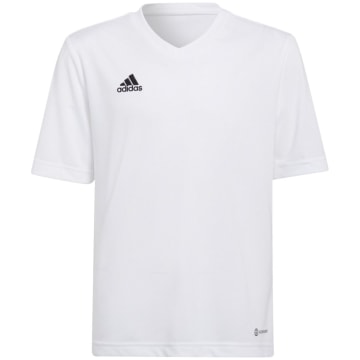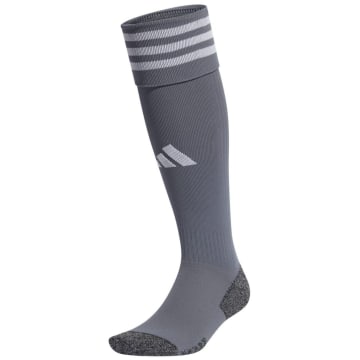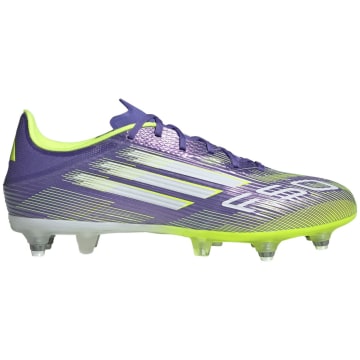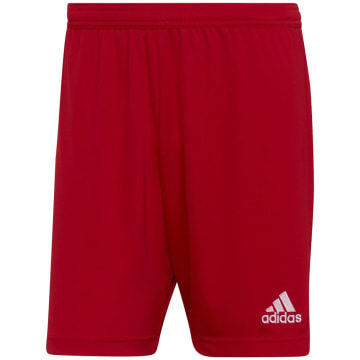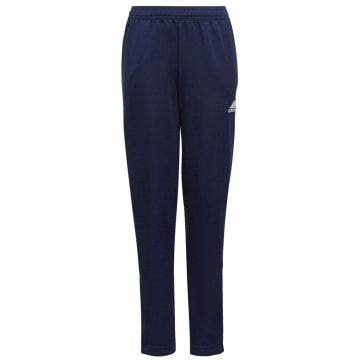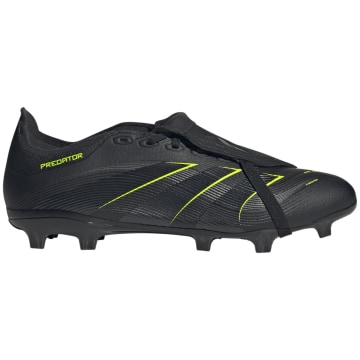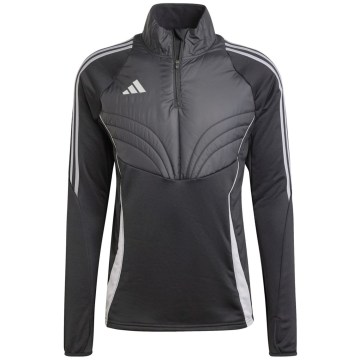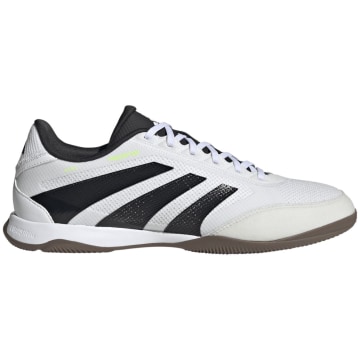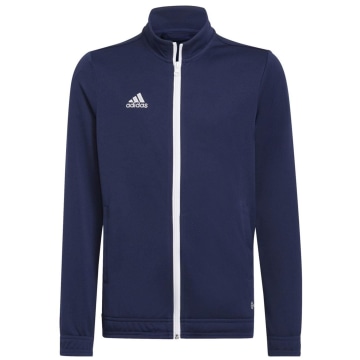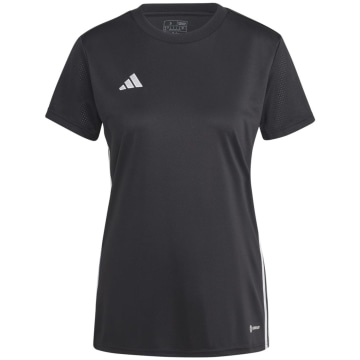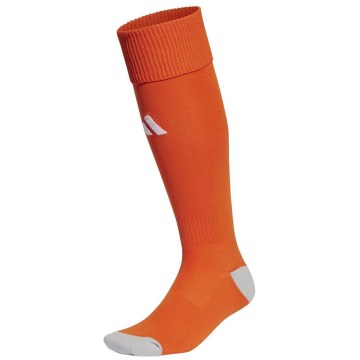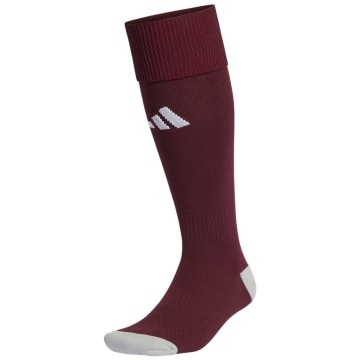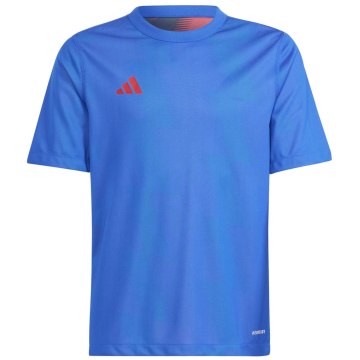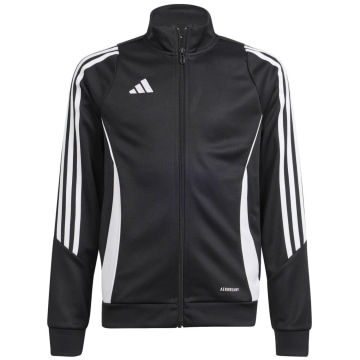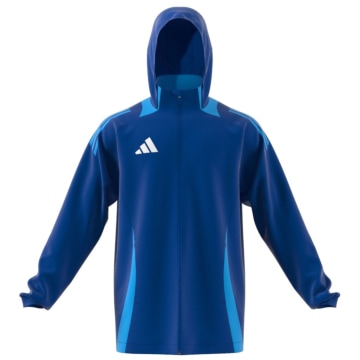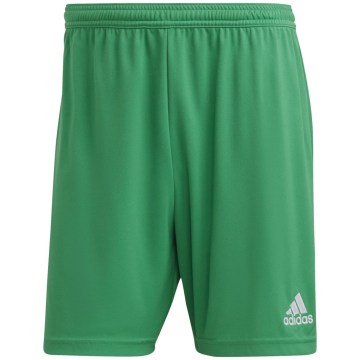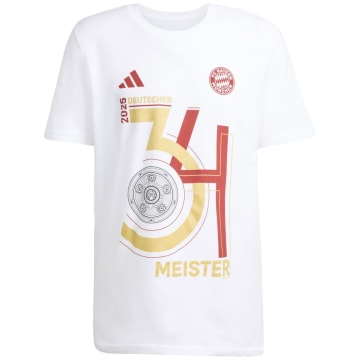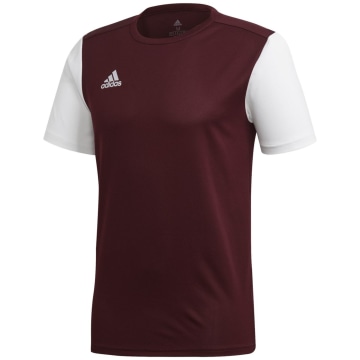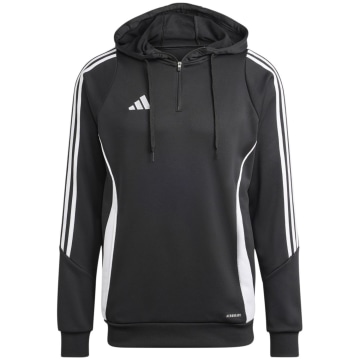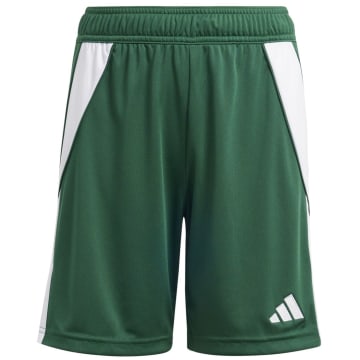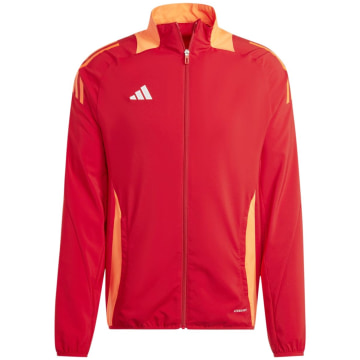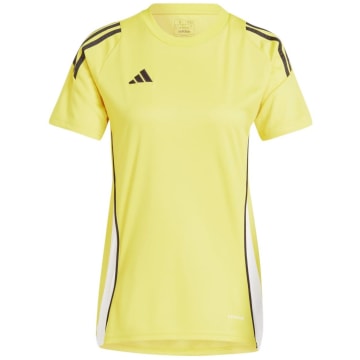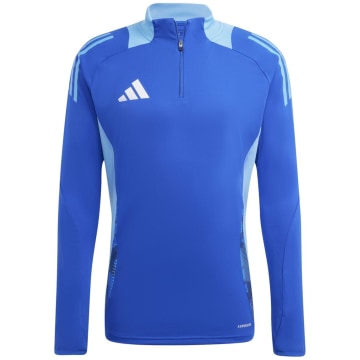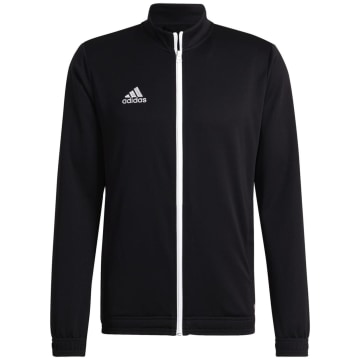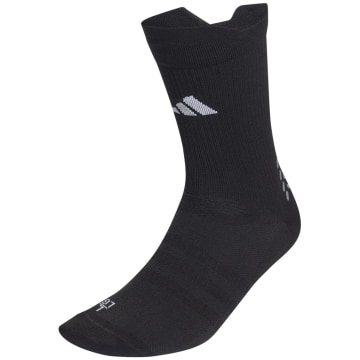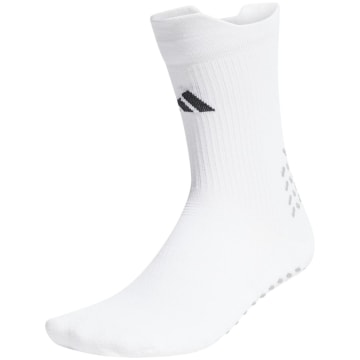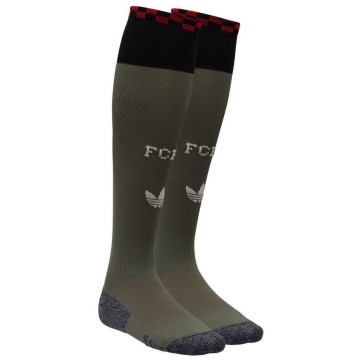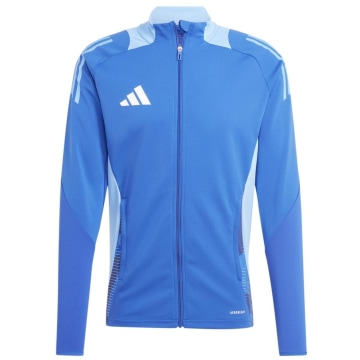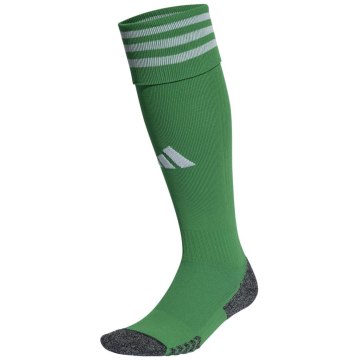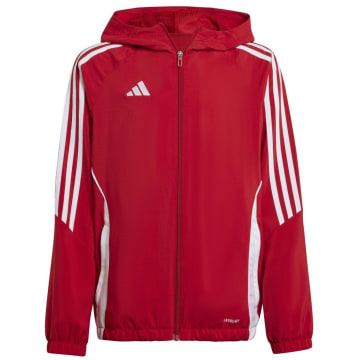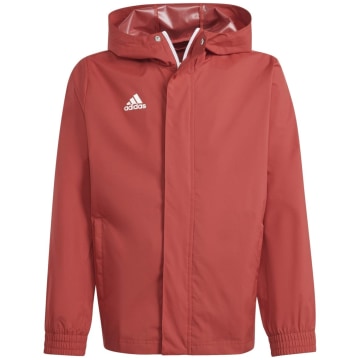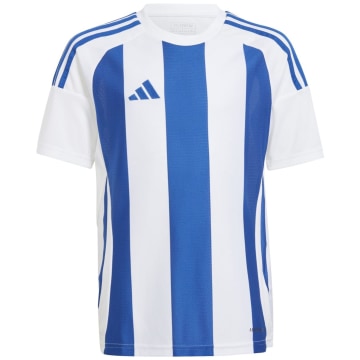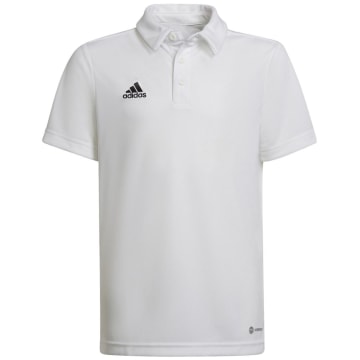Your team sports specialist with team sports equipment from all the top brands

adidas Shop
The adidas brand is deeply rooted in sport and has a long-standing tradition. Its broad and diverse portfolio in the categories Sport Performance and Sport Inspired ranges from major global sports to those with strong regional roots, as well as local sneaker culture. This has enabled adidas to transcend cultural boundaries and become one of the most recognised and distinctive brands worldwide – both in sport and on the streets.
Read more

adidas Shop
The adidas brand is deeply rooted in sport and has a long-standing tradition. Its broad and diverse portfolio in the categories Sport Performance and Sport Inspired ranges from major global sports to those with strong regional roots, as well as local sneaker culture. This has enabled adidas to transcend cultural boundaries and become one of the most recognised and distinctive brands worldwide – both in sport and on the streets.
Read more
Latest adidas Football Packs
THE ADIDAS BRAND
The adidas brand is deeply rooted in sport and has a long-standing tradition. Its broad and diverse portfolio across the categories Sport Performance and Sport Inspired spans major global sports as well as sports with strong regional ties and local sneaker culture. This has enabled adidas to transcend cultural boundaries and become one of the most recognised and distinctive brands worldwide – both in sport and on the streets.
WHAT MAKES THE ADIDAS BRAND SPECIAL
Purpose
Everything adidas does is rooted in sport. Sport plays an increasingly important role in people’s lives, both on and off the pitch. In every culture and society, sport is central and contributes significantly to our health and wellbeing.
Adidas' Purpose
“Through sport, we have the power to change lives” defines how the company is run, how the brand collaborates with its partners, how it develops products, and how it engages with consumers. Adidas constantly strives to push the boundaries of human potential, to include and unite people through sport, and to create a more sustainable world.
Mission
Athletes don’t settle for average. Neither does adidas. Adidas has a clear mission: to become the best sports brand in the world. Every day, employees come to work to develop and sell the best sports products in the world, to offer the best service and the best customer experience – all in a sustainable way.
Attitude
Adidas employees are rebellious optimists who act proactively with the desire to shape a better future together. They see diverse opportunities in the world of sport and culture, where others only see the impossible. “Impossible is Nothing” is not just a slogan. Through their optimism and their belief in the power of sport, they see endless possibilities to harness that power and energise people everywhere.
‘Own the Game’ puts the consumer at the centre of everything we do and is brought to life by adidas employees. The strategic focus is on increasing brand credibility, elevating consumer experiences, and pushing the boundaries of what’s possible in sustainability. The implementation of this strategy is enabled by innovative thinking across all aspects of the business and our digital transformation. ‘We own the game’ – "we own the game".
ORIGIN AND HISTORY
1900 - 1949 - The Early Years
Every great story has a beginning. The adidas story starts in a small town in Middle Franconia. After Adi Dassler’s first tinkering in the family washroom, the ‘Gebrüder Dassler Schuhfabrik’ was registered in 1924. This marked the start of his mission to provide every athlete with the best possible product for their sport. Gold medals in Amsterdam (1928, Lina Radke) and Berlin were the first milestones.
1949 - Founding Father
On 18 August 1949, at the age of 49, Adi Dassler started over: he founded the ‘Adi Dassler adidas Sportschuhfabrik’ and began production in the small town of Herzogenaurach with 47 employees. That same year, he registered a shoe and the now-famous 3-Stripes trademark. From humble beginnings to global success, driven by a miracle…
1954 - A Miracle in Bern
Who would have thought that interchangeable screw-in studs on exceptionally lightweight football boots would make history? When the German national team faced the seemingly unbeatable Hungarians in the 1954 World Cup final, they won much more than just a title. Their legendary victory was talked about for decades – and made adidas and its founder a household name on football pitches everywhere.
“What a Dassler!”
Translation: “The Dassler shoe, a German specialty item, weighs only half as much as conventional English boots. The unique features of the German shoe include screw-in studs that adapt to ground conditions, a soft toe area, and foam padding inside. They are sold in London for 98s. A standard English-made boot can be bought for 45s.”
1958 - Reebok – A Brother in Spirit, Still Far Away
Two brothers working together to offer athletes the best – sounds familiar? Well, this is a different story, beginning across the English Channel, far from Herzogenaurach. While adidas grew and thrived after its own miracle in Bern in 1954, two British brothers named Joe and Jeff Foster gave their grandfather’s company ‘J.W. Foster and Sons’ (founded in 1895) a new name: Reebok. That was also a beginning – we’ll come back to it later.
1967 - Franz Beckenbauer Tracksuit
What’s in a name? A lot, when it belongs to a Kaiser: the ‘Franz Beckenbauer’ tracksuit was adidas’ first apparel product and opened up a whole new business area for the company, which had previously been known only for footwear.
1968 - 1970 - The Trust of Athletes
How do you earn the trust of the world’s best athletes decade after decade? With innovative products that make them even better. But Adi Dassler’s recipe for success had another ingredient: personal contact. He met with athletes, some even visited Herzogenaurach. He listened to them and constantly sought improvements or new inventions to help athletes enhance their performance. The best of the best have trusted adidas and its founder from the beginning. And that hasn’t changed in the decades since.
1970 - A Ball for Everyone
Shoes for gold medallists? No problem. Apparel for record-breaking athletes? Also available. But what about a ball to kick? Said and done! In 1970, adidas introduced the official ball for the FIFA World Cup 1970™: the TELSTAR. The name says it all – the ball was designed to be more visible on black-and-white television. This marked the beginning of a long-standing partnership, and since then, adidas has supplied the official match ball for every FIFA World Cup.
1972 - The Trefoil and the Olympic Spirit
In 1972, the eyes of the world were on Germany and the Olympic Games in Munich. Just in time for the Games, adidas introduced a new, forward-looking logo: the Trefoil. Back then, it stood for performance. Today, it symbolises the adidas Originals collection – lifestyle and street. Times change, but Trefoil quality remains constant.
1972 - 1978 - The Rise to a True Multi-Sport Specialist
From Herzogenaurach to the world: over the years, the 3-Stripes conquered more and more sports. This was reflected in the diversity of athletes who trusted adidas for their performance. Alongside the usual suspects – including the world’s best footballers like the Argentine national team – mountaineering legend Reinhold Messner scaled ever higher peaks in adidas shoes, and gymnast Nadia Comaneci achieved the first perfect 10.
1978 - Death of a Shoemaker
Adi Dassler passed away on 6 September, shortly before his 78th birthday. The man who single-handedly revolutionised the sporting goods industry and set entirely new standards left behind a thriving company. With his passing, the Dassler era ended, and a new one began: Adi Dassler’s wife Käthe took the helm with the help of their son Horst.
1982 - 1989 - The Brother in Spirit on the Move – Reebok Gains Momentum
Thirty years after Joe and Jeff Foster gave their grandfather’s company a new name, Reebok was ready to lead the market – quite literally. Following the fitness boom, women around the world trained in the Reebok Freestyle, and fitness expert Gin Miller became the ambassador for Step Reebok. But that’s not all: in 1989, the shoe innovation THE PUMP hit the market and made Reebok a household name in other categories too.
1984 - A Computer for the Feet
Nowadays almost taken for granted, in the 1980s a computer in shoes was unheard of – simply due to space limitations. But that didn’t stop adidas. The Micropacer was ahead of its time and featured technology that provided athletes with performance data.
1986 - The Fusion of Art and Sport
When US hip hop band Run DMC released their song ‘My adidas’, they wanted to highlight the reality of hard-working people in underprivileged communities – and simply express their pure enthusiasm for their sneakers. adidas only learned of this tribute when the band held up their 3-Stripes shoes in front of 40,000 people at a concert – one of the attendees was an adidas employee. The song became a hit, and Run DMC and adidas formed an unpredictable and unique partnership. This fusion of art and sport gave rise to ‘street fashion’ and marked the beginning of a new way for the sports industry to advertise: with entertainers and musicians.
1989 - The End of the Dassler Era
In 1987, the sudden death of Horst Dassler, three years after his mother Käthe passed away, posed challenges for adidas. In 1989, adidas was converted into a public limited company, and Adi Dassler’s daughters sold their shares in 1990. After their departure, changing leadership and questionable strategic decisions led the company to a record loss in 1992 and to the brink of collapse. But who doesn’t love a good comeback story?
1993 - A New Leadership for the Sleeping Giant
Robert Louis-Dreyfus. Seemingly effortlessly, the new CEO mastered a practically impossible task. Together with his partner Christian Tourres, he understood that the near-bankrupt brand didn’t need reinvention – just a new direction. He transformed the sleeping giant from a sales-driven to a marketing-driven company and put adidas back on a growth path. In 1995 – six years after becoming a public company – adidas went public, and the new marketing slogan said it all: “We knew then, we know now.”
1989 - 1994 - Innovation Never Stops
While the company was still struggling financially, the new marketing team refocused on what adidas had always stood for: making athletes better. Some of the most famous innovations – including Torsion (1989), the Equipment concept (1991), the Streetball campaign (1992), and the Predator football boot (1994) – were born during this time.
1997 - A New Team Member – Salomon
adidas was back on track and brought in reinforcements. With the acquisition of the Salomon Group and its brands Salomon, TaylorMade, Mavic, and Bonfire, the company changed its name to adidas-Salomon AG.
2001 - An Innovation-Driven CEO
Herbert Hainer became the new CEO of adidas-Salomon AG. Under his leadership, the company focused even more on innovation. ClimaCool (2002), adizero (2004), and the F50 football boot, launched in time for the 2006 FIFA World Cup in Germany, impressed the market – just like the new CEO. Over the years, Herbert Hainer led the company from record to record.
2000s - The New Millennium: New Product Divisions
At the start of the new millennium, adidas restructured. In addition to its Sport Performance offering, adidas became the first in the industry to introduce a lifestyle segment focused on sport-inspired streetwear. In the following years, new partnerships emerged with Yohji Yamamoto (2001) and Stella McCartney (2004), as well as exciting new labels like Y-3 (2003) and Porsche Design Sport (2007).
2004 - Impossible? Just a Word
In one of adidas’ most memorable marketing campaigns, top athletes – including David Beckham and Haile Gebrselassie – faced their fears, defeats, and challenges to prove one thing: ‘Impossible is Nothing’. The slogan expressed the determination to achieve goals despite all obstacles.
2006 - Salomon Leaves the Team, Reebok Joins
One year after selling Salomon and its brands (except TaylorMade) to Amer Sports, adidas acquired Reebok, including the brands Reebok, Rockport, and Reebok-CCM Hockey, bringing together two of the most respected and well-known names in the sporting goods industry. In June, the group was renamed adidas AG.
2009 - 2012 - The Search for New Team Members
How do you keep improving? Keep training. Or team up with others to complement your strengths. In 2011, adidas acquired outdoor specialist Five Ten.
2011 - What Belongs Together Comes Together
From the track to the runway, from the stadium to the street – the adidas brand offers apparel and footwear for every sport, every fashion, and every style, for athletes and fashionistas alike. In 2011, adidas launched its ‘all in’ campaign (featuring Lionel Messi, David Beckham, and Derrick Rose), bringing together sport, street, and style for the first time, showing the world that wholehearted commitment is the key to true success – no matter the field.
Reebok Focuses on Its Fitness Roots
If it’s already in your DNA, why reinvent the wheel? After leading the aerobics movement in the 1980s with groundbreaking products and marketing campaigns, Reebok entered a long-term partnership with CrossFit in 2011, a comprehensive strength and conditioning programme. Two years later, studio categories like yoga, dance, and aerobics were launched. Since then, Reebok has been back on track to achieve its ultimate goal: to be the best fitness brand in the world.
2013 - The Innovations Continue
Running shoes have changed forever. The future will tell if that’s true. In spring 2013, adidas introduced the Energy Boost running shoe with a completely new cushioning material. Developed in collaboration with chemical company BASF, the material combined the previously contradictory properties of soft cushioning and high energy return for an unparalleled running experience.
2015 - Creating the New
In March 2015, the next strategic five-year plan was introduced. ‘Creating the New’ became the company’s guiding principle. Through sport, adidas can change lives. adidas aims to inspire and empower people every day to make the most of the power of sport. The company also brings its sports expertise into streetwear and fashion, because sport is a mindset and a way of life. Everything adidas does is deeply rooted in sport. One step in the new strategy was the sale of the leather shoe brand Rockport. This allowed the company to reduce complexity and focus on the adidas and Reebok brands. These brands connect the company with consumers and are therefore fundamental to business success. Through ‘Creating the New’, the company will be closer to its consumers than ever before.
2016 - LEADERSHIP WITH A DIGITAL VISION
After 15 years at the helm of adidas, Kasper Rorsted succeeded Herbert Hainer as CEO in October 2016. The Dane had previously led consumer goods company Henkel for eight years and was well received by employees, media, and investors alike upon joining adidas. As the fashion and sporting goods industry continues to evolve, merging health and fitness into a lifestyle concept, Kasper Rorsted is steering the company toward new success in a digital era, building on the previously established strategy.
2017 - FOCUS ON THE ESSENTIALS
adidas sold its ice hockey brand CCM and its golf brands TaylorMade, Adams Golf, and Ashworth. This allowed the company to focus even more on its core competencies in footwear and apparel and on the adidas and Reebok brands. This step was part of the implementation of the corporate strategy ‘Creating the New’.
2019 - HOME SWEET HOME
adidas celebrates the opening of the Arena building and completes the expansion of its headquarters – the ‘World of Sports’ – in Herzogenaurach.
The campus now offers all 5,400 adidas employees in Herzogenaurach a modern working environment, developed over recent years to reflect the unique corporate culture of the sporting goods manufacturer.
Fully integrated into the Arena building is the ‘MyArena’ workplace concept. It is applied globally and is activity-based, focusing on flexibility and communication. Employees no longer have assigned desks but can freely choose between different rooms and areas according to their needs – from open spaces for team and project work to quiet zones for focused tasks and meetings.
2021 - ‘OWN THE GAME’
The year 2021 marks the beginning of adidas’ new five-year strategic cycle. ‘Own the Game’ clearly places the consumer at the centre of everything we do. adidas recognises the significant influence consumers have on industry trends: they want to lead active and health-conscious lives and combine sport with lifestyle. They are digital natives and make sustainability a priority out of conviction. ‘Own the Game’ will seize these consumer-driven opportunities and create new ones in the interest of consumers.
TARGET GROUP
Consumers are at the heart of ‘Own the Game’. They shape structural trends in our industry through their preferences and behaviour. They want to lead active and health-conscious lives and combine sport with lifestyle. They are digital natives and make sustainability a priority out of conviction. ‘Own the Game’ has the potential to seize these consumer-focused opportunities and create new ones in the interest of consumers.
SUSTAINABILITY
Sustainability has been holistically and firmly embedded in the business model for over two decades. This is a direct expression of the company’s purpose: to change lives through sport. adidas will continue to drive change in sustainability, moving from impactful individual initiatives to a scaled and comprehensive sustainability programme.
The offering: adidas continues to push the boundaries of sustainable products so that consumers can choose from a unique and comprehensive range. By 2025, nine out of ten of its products will be made sustainably. To achieve this, adidas will categorise products into one of three sustainability concepts: they will either be made from recycled materials, processed in a circular economy, or contain regenerative materials. For adidas, sustainable products are those that offer environmental benefits compared to conventional products, either due to the materials used or the production technologies applied.
The approach: adidas is also committed to reducing the carbon footprint of its product offering, aiming to be climate-neutral by 2050. To achieve this, the company is implementing initiatives for zero carbon emissions at its sites and promoting environmental programmes throughout the entire value chain in close collaboration with suppliers.
The communication: adidas will increasingly report on its efforts to produce products from regenerative materials and with low environmental impact. To support this, the brand will simplify product labelling and expand its product take-back programme.

